
|
We have been using plastic bottles all our lives. But let's face it - we all tend to be a bit skeptical about the actual consequences they have on our health. We are right in knowing they contain harmful chemicals, but the degree of this harm varies according to the type of plastic used. You may never have been informed of the ways plastic bottles harm us and which types of plastic cause most harm - but the answers all lie at the bottom of your bottle. If you flip your plastic bottle over you are likely to see letters marked on or close to its base. Some common ones include PET, PVC, HDP and PP. If these don't sound familiar to you, you're not alone - we are going to help you decipher their meaning. This will hopefully help you make wiser choices when buying water bottles. Here's what each label means:
|
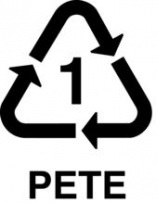 |
|
1. PET or PETE: This one probably sounds familiar. It is the most commonly used plastic material in packaging and consumer products, used especially for water and soft drink bottles. This kind of plastic is only intended for single use and is difficult to decontaminate, meaning that repeated use can be harmful. The more you use it, the higher the risk of leach and bacteria. Also, the metals and chemicals released by this material may tamper with our body's hormonal balance.
|
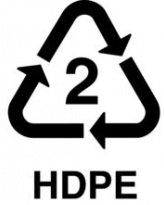 |
|
2. HDP or HDPE: HDPE is a harder type of plastic often used for milk jugs, detergent bottles, oil bottles, toys and some plastic bags. Experts claim that this is the safest kind of plastic that you can choose when buying bottled water, because it barely releases any chemicals. This means your water will be cleaner, hence causing minimal harmful effects on your health.
|
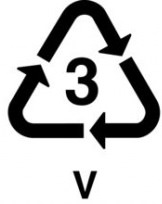 |
|
3. PVC or 3V: This symbol indicates the use of PVC, a highly toxic plastic that is soft and flexible, and is generally used for food wrapping, oil bottles, teething rings, toys, and blister packaging. The chemicals it releases are said to have serious consequences on our body, since they pose effects on our hormones. Experts suggest to avoid packaging made from the PVC and try to find an alternative to it.
|
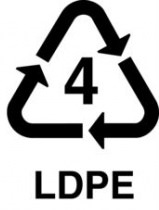 |
|
4. LDPE: Although this type of plastic does not release chemicals into the water, you are unlikely to see this label on your water bottle, because the LDPE material is not used in its production. Rather, you would find it in food packaging, in the case of which you should still try to avoid it. LDPE may still release highly dangerous chemicals in the foods you eat.
|
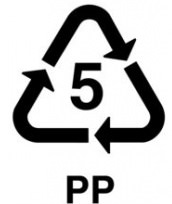 |
|
5. PP: Yogurt cups and syrup packing are made of this white-colored or semi-transparent type of plastic, referred to as PP (polypropylene plastic). This kind of material is tough, lightweight and heat-resistant. This material won't melt easily if heated. Overall, it is a rather safe type of plastic, and it can also block out moisture, grease and chemicals.
|
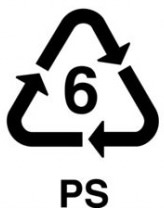 |
|
6. PS: PS stands for Polystyrene - a type of inexpensive and lightweight plastic that is used for a range of products. We have often used this type of plastic- disposable styrofoam drinking cups, egg cartons, plastic picnic cutlery, and take-out “clamshell“ food containers. PS should be restricted to short-term usage only, since dangerous carcinogenic substances could be released from it when heated.
|
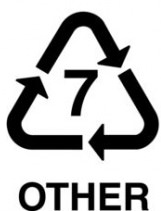 |
|
7. PC or non-labeled plastic: This is potentially the most dangerous plastic found out there. If you ever find the "PC" label on plastic bottles (or no label at all), make sure you steer clear of it as much as possible. It refers to a catch-all category for polycarbonate materials and "other" plastics, which contain chemicals that are likely to leach into the food or drink products it makes contact with. Examples of the use of this material include sports water bottles and food containers. It is highly discouraged to reuse or recycle this type of plastic.
Note: These kinds of plastics are not only used for food and drink products. We also find them in everyday items in which they may not directly affect our health, such as water pipes, signs, clothing, furniture, shower curtains, textiles, stationery, insulation, diapers, medical equipment, etc. Nonetheless, we should always be knowledgeable about the materials and chemicals included in the products we buy, taking extra care on the ones that contain food and drinks.
|